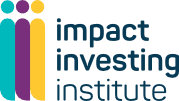Impact investing seeks to generate positive social and environmental impact alongside financial returns, and should be inclusive by design. Perhaps surprisingly, a crucial aspect often overlooked is diversity, equity, and inclusion (DEI). This gap highlights an essential truth: to effectively invest with impact, we must embed inclusivity across all aspects of impact investing.
At the Impact Investing Institute, our work focuses on transforming capital markets to support a fairer, greener, and more resilient future. As part of our endowments with impact work, we collaborated with The Social Investment Consultancy (TSIC) to learn two things:
- how we can incorporate DEI into our endowments with impact programme and other work programmes across the organisation;
- and how we can inspire and support charitable foundations with endowments to put DEI at the heart of their investment processes
Learning for us: how to weave DEI across our own work
Bringing in a DEI expert and critical friend who can hold you accountable is key to success. For us, TSIC provided a valuable third-party perspective that uncovered blind spots, and offered regular check-ins and formal reviews that helped to keep us on track, measure progress, and ensure DEI remained a top priority. Weaving DEI across your work rather than treating it as a separate issue ensures that inclusivity is considered from project design, initiation, delivery, reporting, as well as engagement and communications.
In the case of our endowments with impact programme, we were particularly interested in making sure that we considered DEI as part of our research activities. This led us to look at how to create an environment that fosters diversity during data collection, how to address implicit bias in the reporting, and how to manage the risk of emphasising certain voices over others.
Other learnings included:
- Translate your DEI vision into the programme’s expected outcomes.
- Collect demographic data from research participants to enhance understanding of who you are speaking to, and which voices you are amplifying.
- Make DEI a standard item to discuss in programme meetings and wider engagement on your work.
- Ensure your programme outputs (e.g.: reports, case studies) integrate DEI.
- Utilise any existing DEI frameworks (e.g. events diversity policy, commitments as an equal opportunities employer).
Learnings for others: how charitable foundations can consider DEI in their investment processe
There is a growing understanding that charitable foundations should extend their positive impact beyond grant-making. In 2021, the 300 largest foundations in the UK gave away £3.7bn to charities and individuals in need. But what about the other £87.3bn of assets that those foundations controlled through their charitable endowments?
The way endowments are invested can either contribute to environmental damage, social injustice, health risks, financial instability, and human rights violations or help solve them. Putting DEI at the heart of both foundations’ grant-making ability as well as their investment strategies and processes is essential to ensure inclusivity across the board and address some of the world’s most urgent challenges like social inequality and climate change.
To identify systemic inequalities and areas for improvement within investment practices of endowments, it can be helpful to try and understand them in the wider context of the six conditions of systems change:
- Policies: Endowments with impact strategies need to become inclusive by default. Policies that mandate inclusivity can lead to structural changes in how institutions operate and make decisions.
- Practices: Encourage better practices for integrating impact and DEI in endowment investment strategies.
- Resource flows: Increase investments in impact, including DEI-focused projects.
- Relationships and connections: Diversify investment committees and endowment decision-makers. This could challenge the status quo and lead to more equitable decision-making.
- Power dynamics: Ensure investment advisors are motivated and skilled in advising endowments for impact using a DEI lens.
- Mental models: Normalise the inclusion of DEI in decision-makers’ thinking, fostering confidence and reducing the perception of DEI as a burden.
This holistic approach might include asking some challenging questions around a foundation’s original source of wealth, potential inequalities and environmental issues their assets currently perpetuate, and the practicalities of shifting large endowments to contribute to positive social and environmental outcomes in the long term.
How to take action
The good news is that foundations can take action to review, question, and change their DEI practices and utilise a growing pool of resources and expertise to do so. They can challenge implicit biases, review current investment practices, and identify opportunities to infuse a DEI lens into their investment portfolios.
But most importantly, no organisation can tackle this issue alone if we want to accelerate the transition to a future where more capital at scale benefits both people and the planet. Mission driven organisations need to become better at applying DEI across their work, funders should provide more funding and technical assistance to grantees to help them improve their DEI practices, policymakers should foster an environment that enables others to put DEI at the heart of what they do, and both companies and investors need to examine and improve their current practices.
Resources that can help with that include:
- Equality Impact Investing Project (EIIP) and their Equalising Deal Terms project
- The upcoming Charity Investment Governance Principles, which will emphasise DEI
Most importantly, DEI is not just a metric to check off a list, but a mindset to embody. By sharing our experiences, we hope to support others in embedding DEI principles within their work, whether its foundations who want to invest their endowments with impact or other organisations in the field.
If you want to find out more about this work, reach out to sophia.omar(at)impactinvest.org.uk.
This blogpost was co-authored by Sophia Omar and Yu-Shan Chiu

